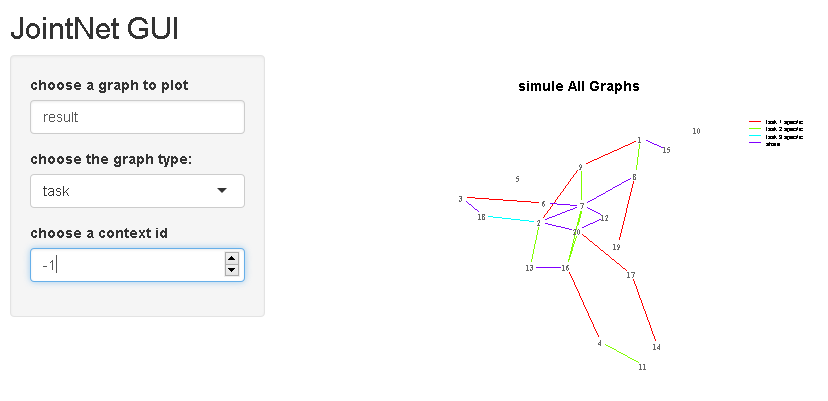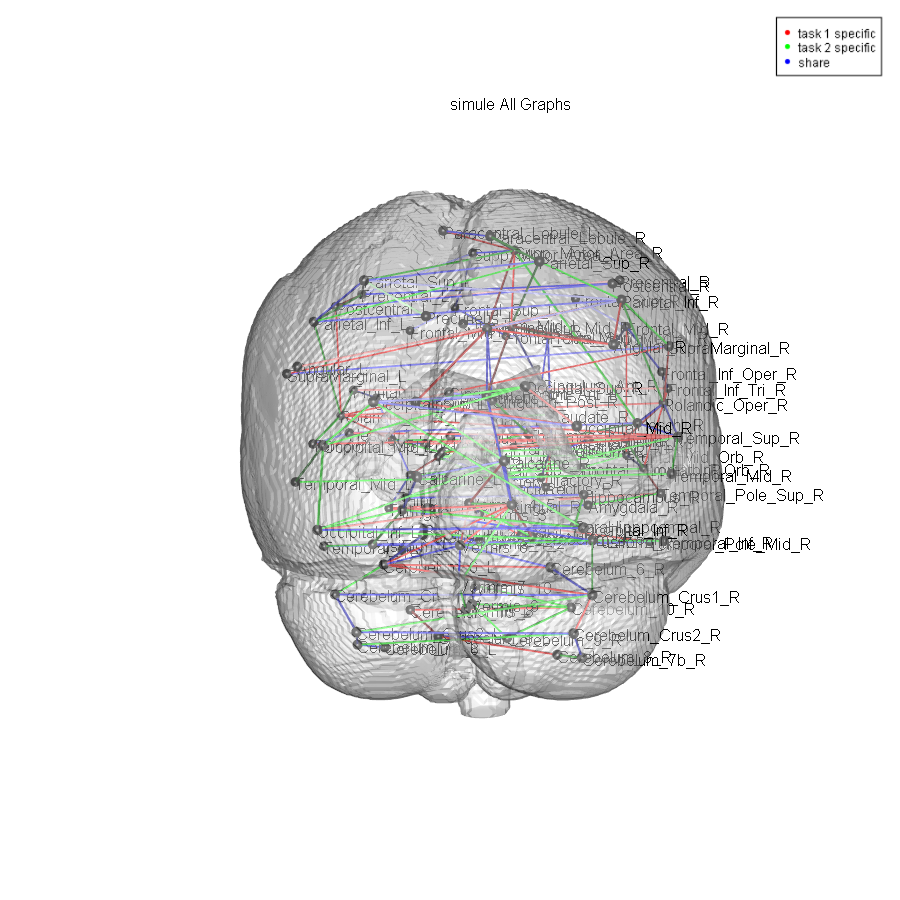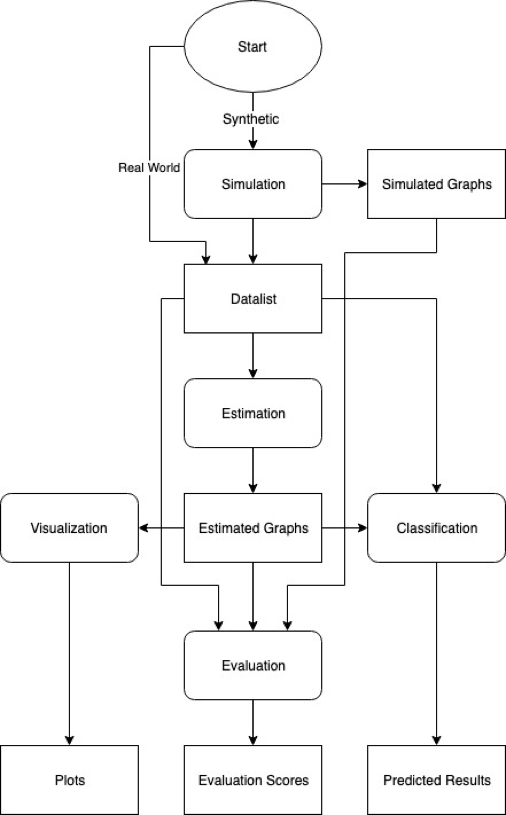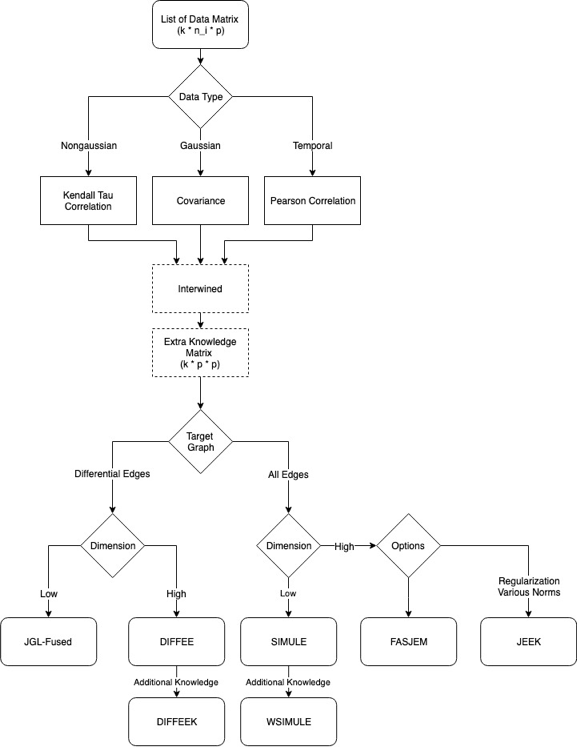JointNets R package for Joint Network Estimation, Visualization, Simulation and Evaluation from Heterogeneous Samples
18 Jul 2019jointNets R package: a Suite of Fast and Scalable Tools for Learning Multiple Sparse Gaussian Graphical Models from Heterogeneous Data with Additional Knowledge
JointNets R in CRAN : URL
Github Site: URL
Talk slide by Zhaoyang about the jointnet implementations:
Demo GUI Run:

Demo Visualization of a few learned networks:
- DIFFEE on one gene expression dataset about breast cancer
- JEEK on one simulated data about samples from multiple contexts and nodes with extra spatial information
- SIMULE on one word based text dataset including multiple categories

- SIMULE on one multi-context Brain fMRI dataset

- Demo downstream task using learned graphs for classification, e.g., on a two class text dataset, we get

- With Zoom In/Out function

- With Multiple window design, legend, title coloring schemes

Flow charts of the code design (functional and module level) in jointnets package


Citations
@conference{wang2018jeek,
Author = {Wang, Beilun and Sekhon, Arshdeep and Qi, Yanjun},
Booktitle = {Proceedings of The 35th International Conference on Machine Learning (ICML)},
Title = {A Fast and Scalable Joint Estimator for Integrating Additional Knowledge in Learning Multiple Related Sparse Gaussian Graphical Models},
Year = {2018}}
}
Support or Contact
Having trouble with our tools? Please contact Arsh and we’ll help you sort it out.